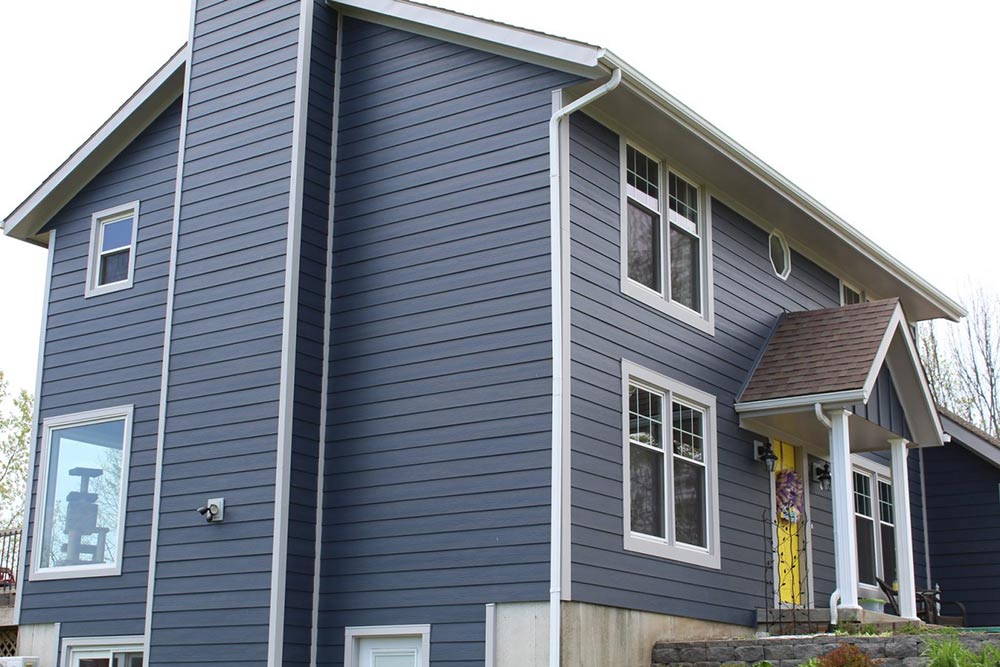Professional home siding: Typical Siding Problems and Solutions
Exterior siding providers: Specialist Exterior Panel Restoration Can Enhance Your Home'S Curb Appeal And Safeguard It From Weather Condition Damage
Types of Siding Products
When it comes to siding repair, understanding the different types of siding products can make a world of distinction. Ever seen how some homes wear their siding like a badge of honor, check here while others appear to fight with peeling, splitting, or warping? That's because each product has its own peculiarities and quirks require tailored fixes. What are the usual suspects?
1. Vinyl Siding
Vinyl siding is typically the go-to option for numerous homeowners due to its price and low maintenance. However don't let the ease fool you-- vinyl can split or end up being breakable over time, specifically in cold environments. Have you ever tapped on vinyl siding and heard a hollow noise? That's normally an indication that repair work are creeping in your future. Fortunately? Fixing vinyl normally implies changing just the harmed panels instead of the whole wall.
2. Wood Siding
Wood siding holds an ageless beauty, evoking images of comfortable cabins or classic homes. Yet, it's a double-edged sword; wetness and bugs can turn this appeal into an upkeep headache. If you have actually ever spotted peeling paint or soft areas, you're taking a look at early indication. Resolving wood siding damage quickly avoids rot from spreading like wildfire. Keep in mind, a little sanding and caulking can often work marvels, however substantial damage might demand full plank replacements.
3. Fiber Cement Siding
Fiber cement is the chameleon of siding materials-- it imitates wood, stone, or stucco with unexpected accuracy. Durable and fire-resistant, it's a favorite among those desiring longevity. Its hard exterior isn't immune to fractures or chips. Repair work typically involve patching and repainting, however beware: improper repairs can result in water infiltration, the arch-nemesis of all siding. Have you ever seen a small fracture masquerade as safe, only to reveal a soaked nightmare behind the scenes?
4. Metal Siding
Metal siding, whether aluminum or steel, shines with modern appeal and durability. Damages from hail or accidental effects can mar its surface. Rust is another villain prowling if protective coatings wear thin. Prompt repair work, consisting of sealing and repainting, can halt deterioration in its tracks. Ignoring these signs? That's like leaving a small hole in a ship's hull and hoping it won't sink.
Typical Signs Suggesting Siding Repair Needs
- Fractures or divides in panels
- Fading or peeling paint
- Warping or buckling surface areas
- Soft or rotted areas in wood
- Dents or rust spots on metal
- Loose or missing pieces
Quick Comparison Table of Siding Materials
| Material | Durability | Maintenance | Repair Intricacy |
|---|---|---|---|
| Vinyl | Moderate | Low | Easy |
| Wood | Variable | High | Moderate to Complex |
| Fiber Cement | High | Moderate | Moderate |
| Metal | High | Moderate | Moderate |
Unwinding the Most Regular Siding Damage
Have you ever noticed the subtle fractures sneaking along your home's exterior, just to dismiss them as safe? Those tiny cracks are typically the very first whispers of more considerable difficulty. Weather's relentless assault-- from hail to scorching sun-- can require siding to warp, split, or even decay.
Secret Offenders Behind Siding Use and Tear
- Wetness Invasion: Water slipping behind siding panels can cause rot and mold, especially if your home's drainage isn't optimum.
- UV Radiation: Sunshine can fade colors and deteriorate products, making them fragile with time.
- Physical Effect: From stray baseballs to tree branches, effects leave dents or holes that compromise siding's integrity.
- Bug Problem: Termites and carpenter ants can silently feast on wooden siding, leaving behind structural vulnerabilities.
Identifying Indications Before They Intensify
Envision walking past your home and finding a patch where the paint peels like old parchment-- what's truly occurring there? Peeling paint typically indicates trapped moisture below the surface area, recommending that water has breached the siding's protective barrier.
Another sneaky indicator is deforming. When boards twist or bow, it's not just an aesthetic flaw; it points to prolonged exposure to wetness or heat. Disregarding this can welcome bugs and accelerate decay.
Specialist Tips to Spot and Prevent Hidden Damage
- Regular Assessments: Stroll your home's perimeter every season, checking for loose or broken panels.
- Tap Testing: A simple knock can expose hollow spots showing rot or insect activity.
- Keep Proper Drainage: Ensure seamless gutters direct water away from siding to minimize moisture buildup.
- Ventilation Matters: Proper air flow behind siding prevents condensation that results in mold and rot.
The Cause And Effect of Neglected Siding Damage
Letting a minor fracture remain is like leaving a door ajar for unwanted visitors. Moisture, bugs, and temperature level fluctuations make use of these vulnerabilities, turning small repairs into comprehensive repair projects. Once paint peels and wood warps, the underlying structure typically suffers silently, concealed from plain view but shrieking in need of attention.
Important Tools for Accuracy in Siding Repair
When dealing with siding repair, the right tools transform a complicated job into a manageable task. Picture trying to pry off harmed siding with a screwdriver-- discouraging, inefficient, and most likely to trigger more damage than good. Instead, a cat's paw or a specialized siding removal tool slides below the boards with ease, sparing the surrounding material.
Here's a compact arsenal every homeowner or expert need to have:
- Utility knife: For scoring and cutting vinyl or fiber cement siding with surgical accuracy.
- Hammer and crowbar: Important for thoroughly getting rid of nails and separating boards without splintering.
- Caulking gun: To seal spaces and prevent water infiltration, since wetness is the silent opponent of any siding.
- Measuring tape and chalk line: For accurate cuts and positioning-- nothing screams 'amateur' like jagged siding.
- Power drill: Speeds up securing and can be matched with a range of bits to deal with various siding materials.
- Level: Ensures your siding sits completely directly, avoiding those subtle angles that turn into eyesores over time.

Materials That Make or Break Your Repair work
Picking the ideal products isn't practically matching colors or styles; it's about durability and compatibility. Vinyl siding replacement panels, wood planks, fiber cement boards-- all have unique attributes that demand respect.
Ever tried to spot an area with mismatched material? It's like covering a hole in a canvas with paper-- temporary and visually jarring. Here's a quick rundown of what to consider:
| Material Type | Best Usage | Key Attributes |
|---|---|---|
| Vinyl | Residential homes with moderate weather condition exposure | Low upkeep, colorfast, however can break in severe cold |
| Wood | Traditional or rustic aesthetic appeals | Needs routine sealing; susceptible to rot and insects if disregarded |
| Fiber Cement | Resilient option for high-moisture environments | Fireproof, heavy, needs carbide-tipped tools for cutting |
Professional Tips for Product Handling and Setup
Here's a nugget numerous ignore: constantly accustom fiber cement siding before setup. Let those panels being in the environment where they'll be installed for at least 2 days. This easy step avoids warping and guarantees a snug fit.
Likewise, never ever ignore the power of a well-placed bead of top quality exterior caulk. This can avoid the perilous creep of wetness behind the siding-- moisture that invites mold, mildew, and eventual structural decay.
One last idea: when eliminating damaged siding, secure underlying insulation and sheathing. A gentle touch here saves hours of extra work and cash down the line.
Step-by-Step Repair Process
Ever discovered a persistent fracture slipping through your siding, whispering tales of water invasion? It's not simply an eyesore-- it's an open invite to rot and mold. Disregarding it can turn a small fix into a colossal headache. Let's break down the process of siding repair with precision and care.
1. Evaluation and Preparation
Initially, don't rush to swindle panels. Begin with a careful inspection. Search for warping, loose nails, and covert wetness beneath the siding. Utilize a moisture meter if you can-- it's a professional's secret weapon. Preparation means more than just clearing debris; it includes protecting nearby plants and surface areas from dust and paint.
2. Eliminating Damaged Areas
Here's where the finesse can be found in. Pry off damaged areas thoroughly, avoiding damage to surrounding pieces. A siding elimination tool or zip tool can make this a breeze, avoiding unneeded damage. Keep in mind, the objective is to keep the stability of the structure beneath.

3. Cutting and Fitting Replacement Panels
Accuracy is everything. Step two times, cut as soon as. When trimming replacement siding, a little bevel the edges to ensure water sheds correctly. This little information typically gets overlooked but can prevent future water damage. Likewise, stagger the seams to simulate the original pattern for a seamless look.
4. Securing and Sealing
Usage galvanized nails to prevent rust, and never drive nails too tight; permit some wiggle room for growth. Sealing is your final guardian-- apply a premium, paintable caulk around edges and joints. This blocks moisture and keeps pests at bay. Remember, even the tiniest space can become a gateway for damage.
Specialist Tips
- Always repair siding on a dry, mild day-- humidity can affect paint adhesion and caulk curing.
- Use a level to ensure each panel aligns completely; crooked siding is more than a visual flaw-- it signifies potential structural problems.
- Keep a replacement panel or two on hand for future quick fixes-- absolutely nothing beats preparedness.
Common Pitfalls to Avoid
| Bad move | Why It Matters | Pro Recommendations |
|---|---|---|
| Overdriving nails | Restricts siding growth, triggering buckling | Leave about 1/32 inch clearance between nail head and siding |
| Skipping moisture check | Missed water damage results in hidden rot | Use wetness meter before setup |
| Disregarding flashing | Water leaks behind siding, causing decay | Check and fix flashing during siding replacement |
Have you ever questioned why some siding repairs stop working within months? The devil depends on the information: inappropriate sealing, negligent nailing, or ignoring moisture problems. When carried out with proficiency, siding repair work not just restores your home's charm however strengthens it versus the components for years to come.